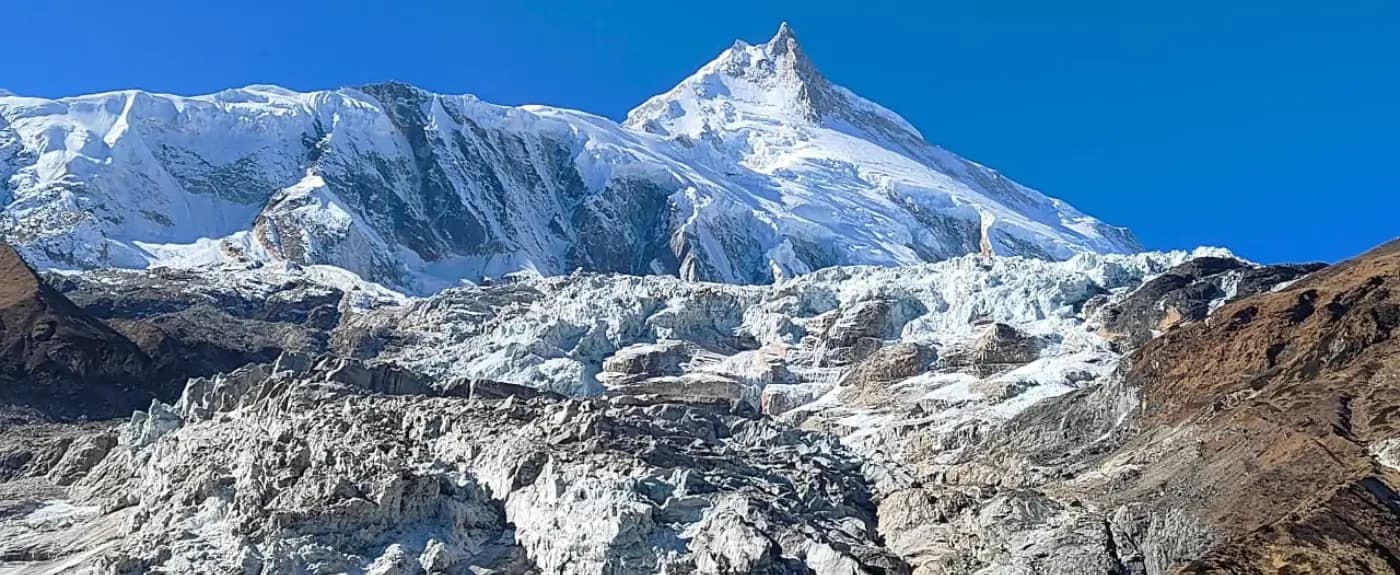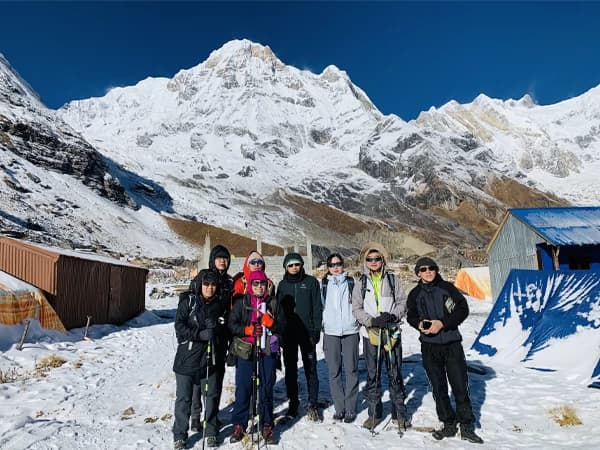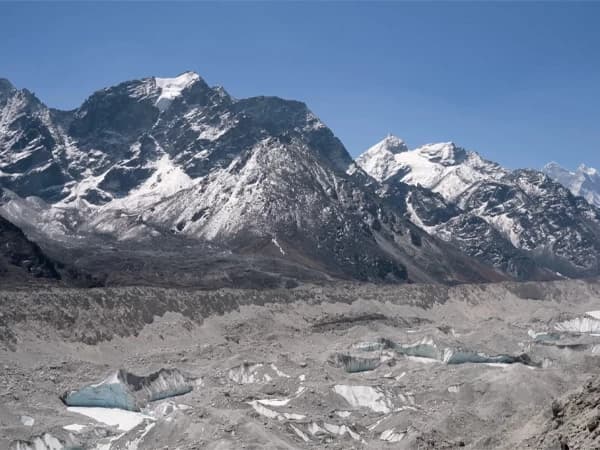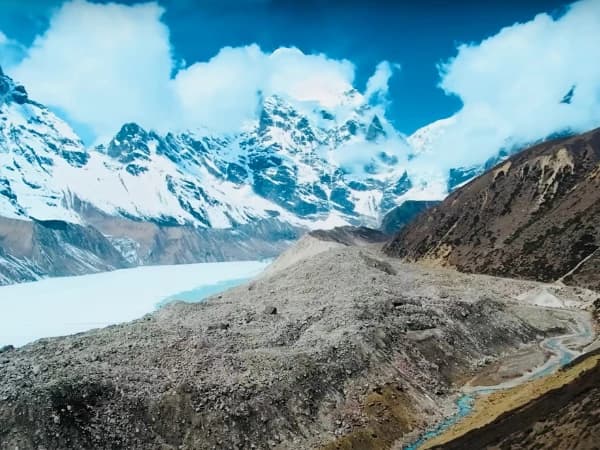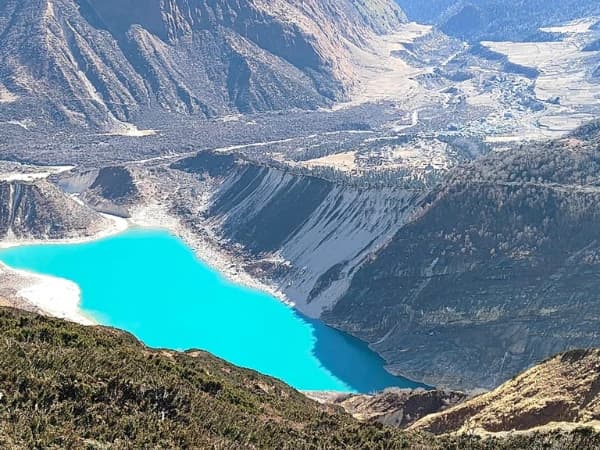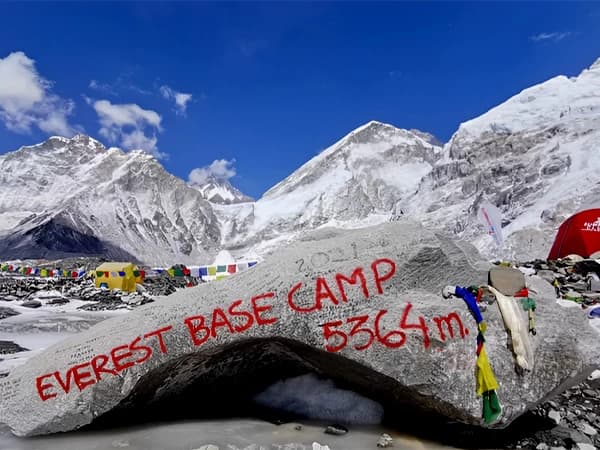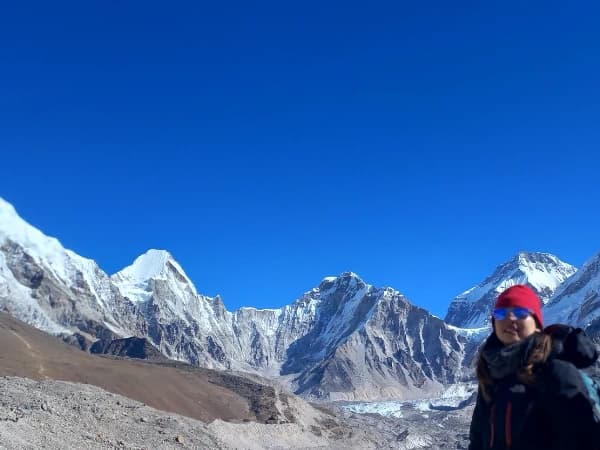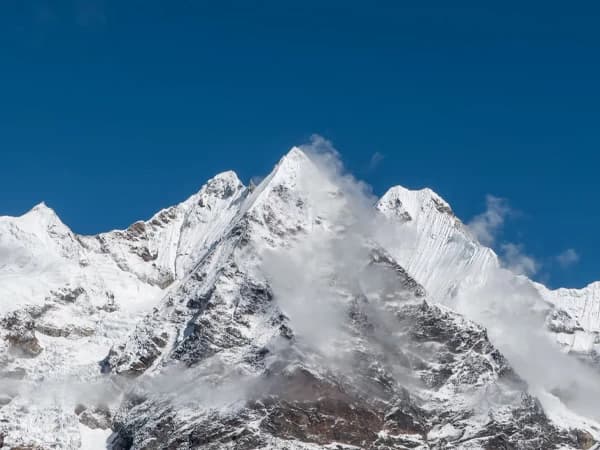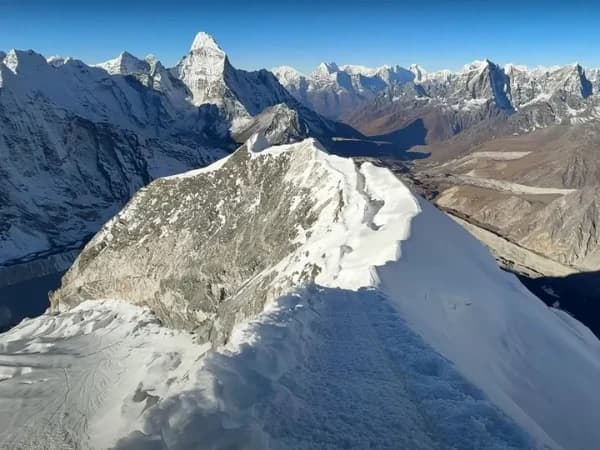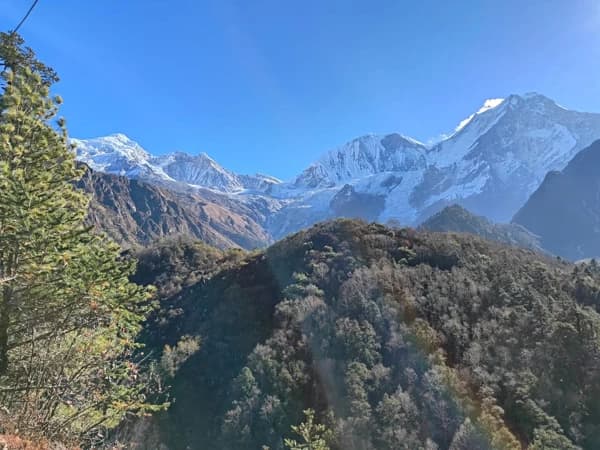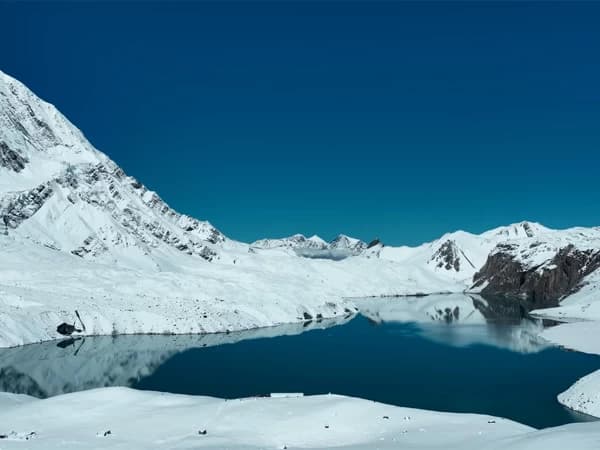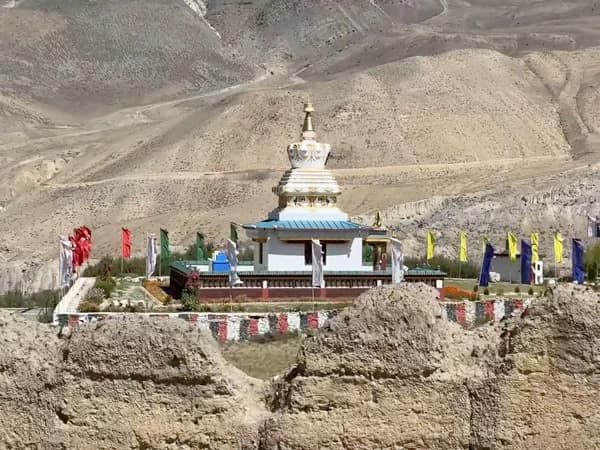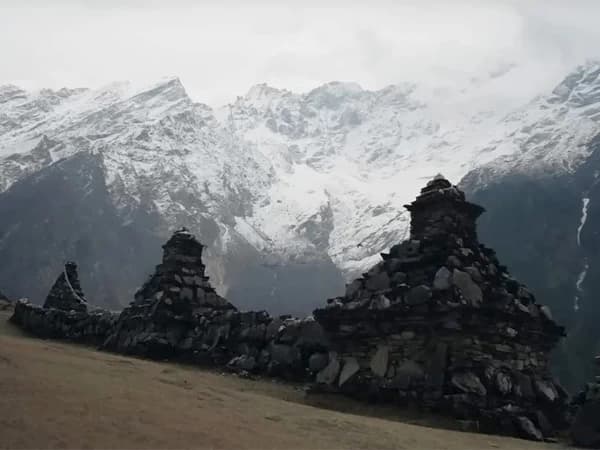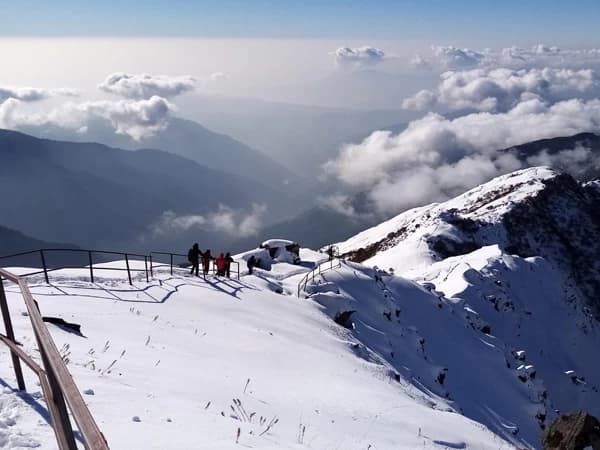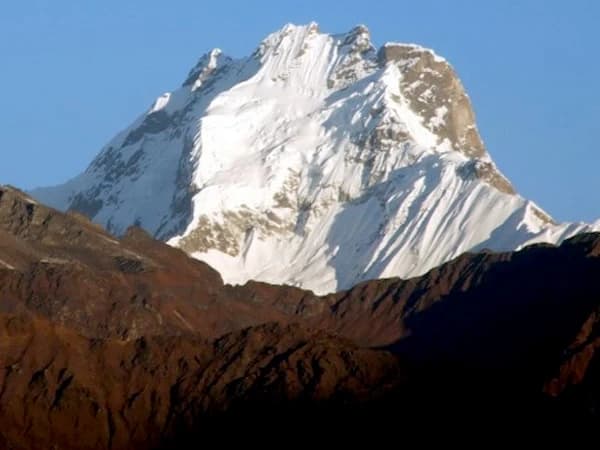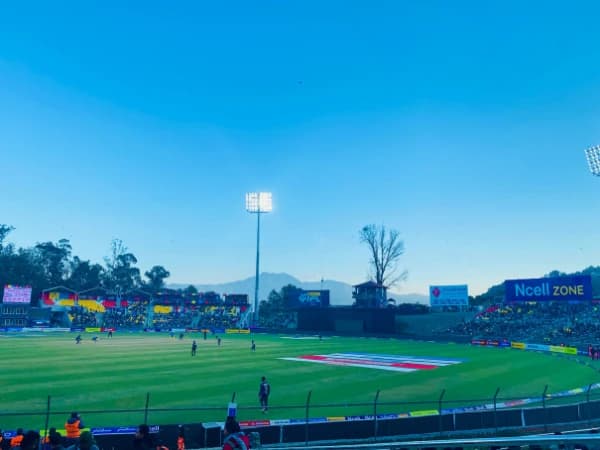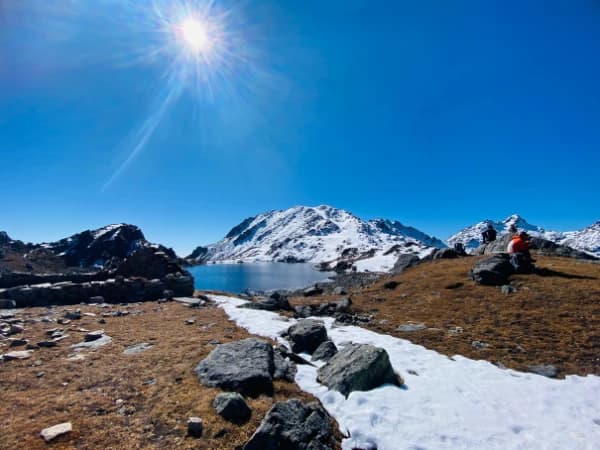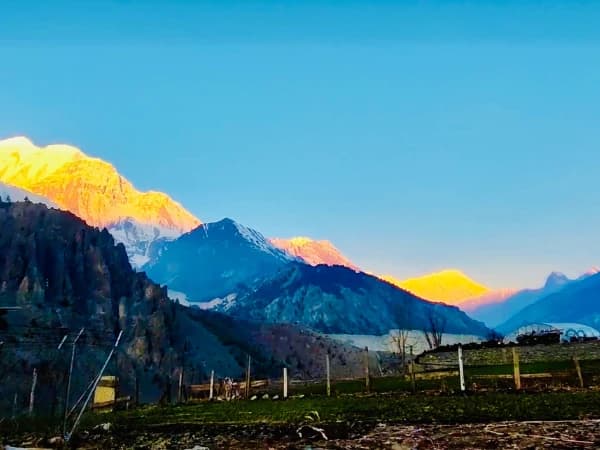Altitude sickness is a kind of mountain sickness during the climbing of high-altitude mountains, characterized by breathing difficulties and headaches, while climbing high-altitude mountains too quickly. Generally, altitude sickness could occur from 3,000 meters or 3,500 meters (11,480 feet) above. However, sometimes it could occur even 2,500 m (8,200 feet) above sea level, depending on the traveler’s physical fitness and acclimatization. Indeed, the higher altitude you go, the lower the oxygen level will be, and the air will be crisp and thin in the Himalayas. So, lower and thinner oxygen levels make it difficult to breathe as normal; in this kind of situation, trekkers need to have enough acclimatization. During the trek, rapid ascent without proper adaptation to the environment increases the risk of altitude sickness.

Trekking in Nepal has the chance to cause altitude sickness for those who are new trekkers in the mountains and the Himalayas. However, if you do proper acclimatization and training, you can prevent altitude sickness. Trekkers, you can follow the proper acclimatization, training, and enough eating and drinking water. The altitude Sickness prevention tips for trekking in Nepal are to ascend slowly and follow the mountain discipline that the guide asks you to obey. We will provide detailed information and training before starting the trek in Nepal.
Highlights of Altitude Sickness Prevention Tips
- Ascend calmly and slowly, climb 500 to 700 meters, and be relaxed.
- Eat plenty of carbohydrate food, which boosts your energy.
- Stay hydrated, drink 3 to 4 liters of safe drinking water every day.
- Take rest and acclimatize every 3 to 4 days of ascending.
- Trekkers skip heavy, salty, and fatty foods during the high-altitude trek.
- Skip drinking alcohol, high caffeine, raw food, and unhealthy food.
- Cocoa tea, ginger, garlic, and hot beverages can prevent, for some trekkers,
- Trekkers can take the medicine, like Diamox, with concern for your doctor.
- Be ready to descend if symptoms worsen, like HAPE or HACE; at least trekkers need to descend 500 m.
- Trekkers can sleep lower altitude than your highest point of the day's trek.
- Trekkers, always be with your team, stay connected with your guide, and have some advice.
If too much headache, coughing up fluid, nausea or vomiting, dizziness, shortness of breath, fatigue, etc., are the most common symptoms, then you can seek emergency help with your guide and immediately descend back.
Altitude Sickness in Nepal trekking
Trekking, hiking, tours, safari, and ascending to the high-altitude Himalayas are popular activities in the vacation destination of Nepal. The world’s famous Mt. Everest (8,848.86 m.), Annapurna (8,091 m.), Manaslu (8,163 m.), Langtang valley, and Makalu(8,485 m.)are the popular trekking routes in Nepal. Out of 14 eight-thousanders in the world, Nepal alone has 8 eight-thousanders. Thus, high-altitude trekking in Nepal is very popular in the world. Trekking in Nepal offers you the wonderful Himalayas exploration, exploring flora and fauna, and experiencing the unique culture and traditions, also you may be rewarded with the world records. Moreover, trekkers would have ultimate peace, unlimited fun, and adventure with the beautiful nature, and gain physical and mental stamina. However, trekking in the high-altitude Himalayas is challenging and rewarding too. Many difficulties and challenges will be faced during the high mountain trekking in Nepal. There might occur altitude sickness, avalanches, glacier floods, and many other challenges.
Therefore, there is a proverb that challenges will give you the ultimate happiness and reward. So, first of all, trekking in Nepal will be in high-altitude mountains. There will be altitude sickness at 3,000 m. and above; in some cases, there might be difficulties even at less than 3000 meters. Indeed, altitude sickness is an illness of high altitude due to less oxygen, crisp air, and poor acclimatization. Those trekkers who are not habitual to trekking in the higher mountains and climbing quickly, these situations have chances of developing altitude sickness. Thus, during the trek, you need to be calm and disciplined and always follow the advice of your guide. Eat plenty of food, drink plenty of water, and climb the mountain slowly, which can prevent altitude sickness.

During the trek, if you continue to feel a headache, nausea, vomiting, or dizziness, you can ask for help from the guide and immediately descend. Hence, these kinds of symptoms are chances to occur with altitude sickness. If the situation is getting worse, then the guide will arrange the emergency rescue while following the safety procedures. Your health is important; be careful while trekking in high-altitude mountains. You always get advice from your guide if you are unaware of things before you are done.
Altitude Sickness and Prevention
Generally, the altitude sickness will be above 3,500 meters above sea level in the Himalayas, where the oxygen level will be thin, crisp, and dry. Trekkers will be suffering from breathing problems, shortness of breath, and then showing several other symptoms. High-altitude pulmonary edema (HAPE) is characterized by fluid in the lungs, and high-altitude cerebral Edema (HACE) is characterized by brain swelling. So, the most preventative way to avoid altitude sickness is to do proper acclimatization, eat healthy, and drink plenty of water. Usually, the symptoms of altitude sickness will appear within 6 to 24 hours after you arrive. Altitude sickness treatment and prevention can be done with a skillful mountaineer and a professional trekking or climbing guide.
Symptoms of HAPE
- Frequently dry cough and bloody sputum are coming out.
- Chest tightness and difficulty with it
- Short breathing and extreme fatigue
- Bluish fingernails and lips
- Cracking sound while breathing
- Decreasing ascending and physical exercise tolerance
Symptoms of HACE
- Confusing and altering mental status
- Continue headache with unusual
- Nausea and vomiting
- Feeling dizzy and having hallucinations
- You will feel movement or ataxia.
- Difficulty in walking in sight lining, and the heel-to-toe test fails
Prevention of Altitude Sickness
Indeed, every challenge and sickness will have prevention and precision. However, prevention and precision before catching the sickness is the best medicine ever. Trekkers who follow their local mountain guide and always stay within the group will help to prevent sudden altitude sickness. Whenever you feel that you have altitude sickness and match the above-mentioned symptoms, then you need to descend with concern about your guide. Trekkers need to follow the mountain's rules and discipline during the trek. You will consume healthy food with enough carbohydrates and drink plenty of safe drinking water. Hence, the following points are about the prevention of altitude sickness. Hence, the altitude sickness prevention medication is crucial during high-altitude trekking and expeditions.

- Ascend calmly and slowly.
- Above 2,500 m. You can ascend 300 to 500 meters a day.
- Take a proper acclimatization every 3 to 4 days of trekking and take a rest.
- Climb at high altitude and sleep at low altitude.
- Drink plenty of water and fluids every day, at least 3 to 4 liters.
- Maintain a high-carbohydrate diet as your body gets more calories.
- Avoid alcohol, tobacco, and sleeping pills.
- Limited and tolerable physical exercise and exertion
- Trekkers can carry Diamox or Dexamethasone with the approval of their doctor.
- If the symptoms occur, immediately stop ascending and start descending at least 300 to 1000 meters with concern for your guide.
- Stay hydrated and can use headache and pain reliever medicine.
- Use the supplemental oxygen, which will help you with breathing.
- And if altitude sickness is a high level of symptoms, then the guide will arrange an emergency rescue.
Everest Trekking and Altitude Sickness
During the Everest Base Camp trek, there is a chance of altitude sickness occurring. Trekkers will reach an altitude of 5,644 m above sea level in Kalapatthar. However, the Everest Base Camp is about 5,364 meters above sea level. The expedition to Mt. Everest will have a high chance of altitude sickness; climbers will have to wear oxygen masks during the Everest climb. The altitude of Mt. Everest is 8,848.86 meters, 29,024 feet above sea level. First-time trekkers and frequent trekkers both have a chance to experience altitude sickness. However, first-time trekkers have a high chance of having altitude sickness. During the Everest base camp trek, you will pass by Lukla, Namche Bazaar, Tengboche, Dingboche, Lobuche, and Gorak Shep. From Phakding, there will be a chance to experience altitude sickness; thus, trekkers need to be in tune with altitude sickness prevention. In the event of unforeseen circumstances, Touch Planet Treks will arrange the emergency rescue on an urgent basis.

Altitude Sickness in Himalaya Trekking
Nepal is popular for high-altitude trekking. Mt. Everest, Annapurna, Manaslu, Makalu, Langtang, Mustang, Dolpo, and Kanchenjunga are the major attractions of the trek. Moreover, Nepal is famous for cultural tours, wildlife safaris, village tours, and many other tourist activities. However, altitude sickness occurs in mountain trekking, which is 2,500 or 3,000 meters. Himalayan trekking in Nepal will give you ultimate peace, beautiful exploration, unique and diverse cultural experiences, etc. The Himalayas trek is for your ultimate peace of mind and new energy from the long, monotonous work. Indeed, every person needs to have a travel vacation at least once a year to adopt their new mindset and boost the energy for good outputs for work. The Himalayas trek in Nepal will provide you with great energy and new thoughts, and ideas. Visiting the beautiful Himalayas, nature, local culture, and innocent local people will make you peaceful and boost your energy.
Trekkers will have chances to get altitude sickness during the high mountain trekking in Nepal. As the saying that, all problems have solutions, and every challenge will have opportunities. Thus, the altitude sickness in Himalaya trekking in Nepal will make the travel much more careful and disciplined. Moreover, you will be enthusiastic about the Himalayas' nature, and you could explore more flora and fauna and the beautiful Himalayas. Altitude sickness in the mountains could occur, but trekkers will have a beautiful exploration and experience of the unique landscape and nature. However, altitude sickness can be avoided by following the proper acclimatization, drinking plenty of water, eating carbohydrates, and following the mountain trekking rules.
High Altitude Sickness Medicine
The altitude mountain sickness, AMS, is a mountain illness due to a lack of enough oxygen and extreme cold weather. There might be frostbite and life-threatening conditions in extreme cold, high-altitude mountains; thus, you need to be equipped with proper outfits and follow the safety procedures. High-altitude mountain sickness (AMS) has prevention and medicine in case AMS occurs. However, trekkers can use the medicine with the prescription and advice from the doctor. Trekkers can do altitude sickness medication like Yoga, light exercise, acclimatization, and climb high and sleep low techniques.

- Acetazolamide, or Diamox commonly used; consult with the doctor.
- Dexamethasone is for moderate to severe altitude sickness.
- Nifedipine for HAPE (high pulmonary Edema)
- Ibuprofen or paracetamol relieves headaches.
- Consume hot ginger and garlic drinks.
Non-medical Treatment
- Ascend slowly, and if AMS occurs, descend from 300 to 1000 meters.
- Proper acclimatization and taking enough rest
- Stay hydrated. Consume hot or cold beverages and clean water, and avoid alcohol.
- Climb high and sleep at a lower altitude at night.
- Always be with a group of trekkers.
- Any difficulties, take advice from your mountain guide.
Useful Information About AMS and Trekking in Nepal
Trekking in Nepal and the Himalayas is a challenging thing, and ultimately it will be an amazingly rewarding and wonderful experience. Trekking in Nepal includes the journey to the roof of the world; the highest point on earth is Mt. Everest in Nepal. Trekkers would be climbing to the highest point on earth, Mt. Everest. The Mt. Everest climbing is one of the challenging parts and is beautifully rewarding. You will feel like you are in real heaven, that you could have a live experience. However, it can’t come to you without hard work and life-threatening challenges. Trekking in high-altitude mountains in Nepal, there will be chances to have altitude sickness. Trekkers can avoid such altitude mountain sickness (AMS) and other challenges with proper training and by following the safety measures.
Every great task in life has difficulties; you need to tackle such difficulties with proper training, safety rules, and doing things seriously would bring you success in life. As we all know, fewer challenges mean fewer rewards, or no rewards; high challenges mean big rewards. So, before going on the high-altitude trekking in Nepal, trekkers need to know about the conditions and the challenges in the mountain journey.
Altitude Sickness and Travel Insurance for Trekking in the Himalayas
Altitude mountain sickness AMS and other illnesses, unforeseen circumstances, avalanches, glacier floods, and wildlife encounters are the challenging factors of trekking in Nepal. Moreover, cancel the trip because of unforeseen circumstances, travel interruptions, unpredictable climate, or political unrest that could occur during the treks and travel in Nepal. However, the major fact is that altitude sickness, avalanches, and unpredictable weather are the major challenges in trekking in Nepal. Those trekkers willing to do high-altitude trekking in Nepal will need to have travel insurance. The travel insurance covers the high-altitude trekking up to 6,000 m and for climbing and expedition up to 8,848 meters. The terms of insurance have to cover emergency rescue, helicopter rescue, and medical coverage for major surgery. Hence, the travel insurance for trekking in the Himalayas and high-altitude trekking in Nepal has to cover helicopter rescue and medical care for altitude sickness.

Altitude Mountain Sickness Prevention for Prolonged Patient
The AMS (Altitude Mountain Sickness) for Prolonged Patients will make it more challenging to do high-altitude trekking in Nepal. You need to keep in mind that altitude sickness prevention is not equal to ordinary healthy trekkers and prolonged patients. The chronic patient already has lower disease preventive power, so climbing into high-altitude mountains needs to have extra care and emergency rescue facilities. The travelers with diseases like diabetes, high sugar, high blood pressure, cancer, arthritis, depression, heart disease, and obesity need more care for mountain trekking. Altitude mountain sickness is also called the Himalayas sickness in Nepal. The prolonged patient could do trekking below 4,000 meters. Although below 4,000 meters, trekking also has chances to get AMS, 2,500 meters could occur with altitude sickness trekking in Nepal. Thus, the altitude sickness prevention for the prolonged patient needs much care and rescue preparation during trekking in Nepal.
Best Season to Avoid the Altitude Sickness and Treks in Nepal
The best season for trekking in Nepal is spring and autumn, during the months of March to May and September to November. However, the lower-altitude treks, wildlife safari, city tour, and village tour would be favorable during all the seasons of the year. The higher altitude trekking and peak climbing best season will be from March to May and September to November. However, altitude sickness also occurs during the best season for trekking in Nepal. Although during the best season for trekking, there will be favorable weather, less cold, and beautiful natural surroundings, thus, higher altitude trekking will be good in the best season for trekking in Nepal. The spring season falls in the months of March to May; during this time, nature and surroundings will be amazingly cool, with green landscapes and beautiful snowy mountains.
Similarly, the autumn season falls in the months of September to November; during this time, the surroundings will be beautifully green, crops will be turning into gold, clean and beautiful streams and glaciers, and rivers will be blue. Moreover, during the autumn season, there will be a festive season in Nepal, so you can encounter the beautiful local traditions and cultures. Everywhere, colorful surroundings with nature and traditions make you feel amazing. During summer or monsoon, there will be heavy rainfall and flooding, and it will be hot in the lower parts of Nepal. The summer or monsoon season in Nepal will be in the months of June to August. The winter season in Nepal falls from the month of December to February; during this time, it will be cold weather. High-altitude mountain trekking will be extremely cold during the winter season.
Thus, the best seasons to avoid altitude sickness for trekking in Nepal are spring and autumn. For those who are enthusiastic about nature, want to do a lower-altitude trek, a city tour, a village tour, and a wildlife safari, the other seasons are also favourable, rather than spring and autumn.
How Touch Planet Treks Manages Safer Trips and Avoids AMS
Touch Planet Treks is one of the best trekking and travel companies in Kathmandu, Nepal. Indeed, Touch Planet Treks is one of the responsible, sustainable, community-based, professional, and customer-oriented travel and trekking companies in Nepal. We are following the safety and security procedures with personalized care for our guests. Touch Planet Treks believes that “travellers' happiness is our goal; leave everything else,” and your security is a top priority while adventuring in the Himalayas. We will provide you with the safety procedures and training format to be prepared before going on the high-altitude treks. We will provide the proper equipment and a professional and well-experienced guiding team leader. We will provide the training briefing on things to do's and don’s before starting the trek, and our guide will give you a daily briefing.

Our professional guide will bring the oximeter and first aid kit box; from time to time, we will measure your oxygen level and do the needful accordingly. We will keep you safe and warm in the teahouse, take care of your food, sleeping rooms, luggage, and overall body health during the trek in Nepal. If you have any medical difficulty, we will check your health conditions; if it becomes severe, we will arrange emergency rescue and medical treatment. Thus, Touch Planet Treks is one of the best customer-oriented and safest trekking and travel company in Nepal.
Conclusion of the Altitude Sickness and Prevention Tips
Altitude sickness during high-altitude trekking in the Himalayas and Nepal is a common challenge for first-time trekkers. However, we can have a presentation and meditation to avoid altitude sickness while trekking in the Himalayas. Altitude sickness is a mountain illness due to a lack of enough oxygen and thin and crisp air in high-altitude mountains. By following the safety procedures and doing physical and mental exercise, trekkers can avoid altitude sickness during the trek. Indeed, trekkers need to follow the expert’s advice, be disciplined, and have good travel insurance coverage for high-altitude trekking. Often the travel insurance will have the coverages of below 4,000 meters, below 6,000 meters, and above 6,000 meters to 8,848 meters. So, trekkers, make sure you have coverage for your trekking altitudes with emergency rescue and medical care coverage. Hence, with proper safety procedures and advice, trekkers can avoid altitude sickness.
FAQs of Altitude Sickness Prevention Tips
At what altitude does altitude sickness start?
Altitude sickness is a high-elevation mountain illness during trekking due to a lack of enough oxygen and breathing difficulty. The altitude sickness could occur from 3,000 meters or above. However, some treks can occur even at an altitude of 2,500 meters.
Does altitude sickness affect more for pregnant women?
The altitude sickness and pregnancy sensitivity for high-altitude trekking. We advise you to avoid high-altitude trekking and hiking with physical challenges. Although you plan for the mountain trekking in pregnancy, consult with a medical professional about the high-altitude care and safety procedures. So, altitude sickness and pregnancy are sensitive cases. You need to have emergency rescue and advisable not to go for high-altitude trekking, on a case-by-case basis.
Is it okay to consume alcohol during the trek, and how does it affect altitude sickness?
Altitude sickness and alcohol are opposite elements to consume. Occurring altitude sickness and consuming alcohol is definitely no. However, consuming alcohol during the city tour, lower altitude trek, and village tour is okay, but drinking is limited. Short hiking, lower than 2,500 meters trekking, is okay to drink alcohol. Although we don’t promote drinking alcohol, you can completely avoid drinking alcohol and other addictive habits.
What are the best prevention tips for altitude sickness?
The best altitude sickness prevention tips are to be fit in physical and mental health before starting the trek. You can eat enough carbohydrate food to gain energy, and drink plenty of water and fluids during the trek in Nepal. You can go hiking in a team; carry emergency medicine with the help of a doctor. Always have travel insurance with rescue and medical treatment coverage for high-altitude trekking.
What are the procedures to prevent altitude sickness without medication?
Without medication, you can prevent altitude sickness during high-elevation trekking in Nepal. First of all, you need to be smarter and follow the proper mountain discipline to prevent altitude sickness. Below are the procedures to prevent altitude sickness without medication:
- Proper physical training before starting the trek and being mentally fit
- High-level ascending and low-level sleeping rules
- Drink plenty of water and fluids during the trek.
- Eat enough carbohydrates to have proper energy.
- Trekkers can drink ginger and garlic tea.
- Always climb slowly and calmly.
- Proper acclimatization during the altitude trek
- If it occurs, the AMS immediately descends from 300 m to 1000 m.
- In an emergency, seek helicopter rescue with concern for your guide.

What is the cause of altitude sickness?
The altitude sickness, or acute mountain sickness (AMS), would have been caused by the rapid ascent to the higher altitude in the mountain. The air condition of high-altitude mountains will be crisp, thin, and low level of oxygen. Moreover, it might be that the trekkers are first-time trekkers or medically unfit for the ascent to high altitude. So, trekkers need to be properly prepared for the trek, well acclimatized, eat plenty of food and drink plenty of safe water, and hydrate themselves.
What are the three major stages of altitude sickness?
The major stages of altitude sickness are acute mountain sickness (AMS), high-altitude pulmonary Edema (HAPE), and high-altitude cerebral Edema (HACE). Although the HAPE and HACE refer to serious illnesses during trekking in Nepal. The trekking guide and trek agency will manage the emergency rescue and the medication; however, trekkers need to have medical insurance that covers the high-altitude mountain trek.
What is the best medicine for altitude sickness?
The best medicine for altitude sickness is acetazolamide (Diamox), and dexamethasone is also best for severe AMS or HACE. However, you can use the medicines with the consent of a doctor.
What is the fastest cure for altitude sickness?
The fastest cure for altitude sickness is to descend back to a lower altitude; you can go 300 m to 1,000 m lower than the current altitude. However, if the AMS is severe, then the guide will arrange for emergency helicopter rescue and medical treatment.
What can I drink and eat to avoid altitude sickness?
Trekkers during the high-altitude trek in the Himalayas can have plenty of fluids and safe drinking water, at least 3 to 4 liters of drinking water, and eat enough carbohydrate food. Moreover, trekkers can consume ginger garlic tea or drinks and eat dry snacks to maintain physical energy. The most important thing is to avoid drinking alcohol and high-caffeine drinks.
